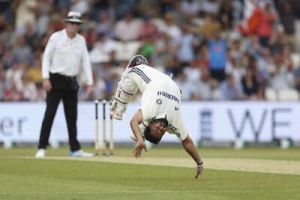Since its inception in 1877, Wimbledon has stood as the oldest and arguably most prestigious tennis tournament in the world. Integral to its identity is a strict dress code that mandates all-white attire for players, permitting only a 10mm trim of color.
The tradition of wearing all white at Wimbledon traces back to the 1870s, during the Victorian era. At that time, any visible sign of perspiration was considered unseemly.
The original intent of the all-white rule was to mask sweat marks and provide a degree of coolness for players during the summer months. Over time, it has evolved into a defining characteristic of Wimbledon's rich history and tradition. While generally inflexible, the rules have been subject to occasional revisions.
Several prominent figures in the tennis world, including Billie Jean King, Judy Murray, and Heather Watson, have voiced concerns about the potential discomfort that white undershorts can cause for female players during menstruation. As a result, in 2023, the All England Club modified its policy to allow players to wear dark-colored undershorts, provided they do not extend beyond the hemline of the shorts or skirt.
Controversies surrounding the dress code at Wimbledon are not a recent phenomenon. In 1949, Gertrude Moran sparked controversy with a glimpse of visible undergarments. Andre Agassi, recognized for his unconventional tennis fashion, boycotted Wimbledon in the 1980s to protest the all-white dress code.
In 2013, tennis icon Roger Federer caused a stir by sporting white shoes with orange soles. Wimbledon officials requested that he refrain from wearing the shoes, prompting Federer to criticize the regulations as "too strict."
More recently, in 2017, Venus Williams was required to change her attire during a rain delay due to the visibility of her fuchsia bra straps.
Wimbledon relaxed its regulations in 2023, permitting women to wear darker shorts beneath their skirts following concerns raised by several players about wearing white during their menstrual cycles.
In a released statement, the AELTC conveyed, "Prioritizing women’s health and supporting players based on their individual needs is very important to us, and we are in discussions with the WTA, with manufacturers, and with the medical teams about the ways in which we can do that."
Newer articles
Older articles
 Greg Chappell Hails Rishabh Pant's Revolutionary Impact on Cricket
Greg Chappell Hails Rishabh Pant's Revolutionary Impact on Cricket
 Smith Targets Second Test Return After Baseball Cage Recovery in New York
Smith Targets Second Test Return After Baseball Cage Recovery in New York
 Rishabh Pant's Somersault Celebration Deemed 'Unnecessary' by Doctor Who Oversaw His Recovery From Near-Fatal Crash
Rishabh Pant's Somersault Celebration Deemed 'Unnecessary' by Doctor Who Oversaw His Recovery From Near-Fatal Crash
 Gavaskar Calls for Kuldeep Yadav's Inclusion in 2nd Test Amid Bumrah Fitness Concerns
Gavaskar Calls for Kuldeep Yadav's Inclusion in 2nd Test Amid Bumrah Fitness Concerns
 Rishabh Pant's Composed Reply Dismisses Harry Brook's Sledge in Edgbaston Test: Key Partnership Boosts India
Rishabh Pant's Composed Reply Dismisses Harry Brook's Sledge in Edgbaston Test: Key Partnership Boosts India
 Samsung Unveils Galaxy A35 5G and A55 5G Prices, Availability
Samsung Unveils Galaxy A35 5G and A55 5G Prices, Availability
 Harshit Rana Released: Indian Pacer Exits Squad Before Second England Test in Birmingham
Harshit Rana Released: Indian Pacer Exits Squad Before Second England Test in Birmingham
 Bangladesh Test Captain Najmul Hossain Resigns After Sri Lanka Defeat
Bangladesh Test Captain Najmul Hossain Resigns After Sri Lanka Defeat
 Mirabai Chanu: Weightlifting Demands Constant Mental Focus, Even During Family Time
Mirabai Chanu: Weightlifting Demands Constant Mental Focus, Even During Family Time
 'Manjummel Boys' Star Soubin Shahir Denies Arrest in Film Finance Dispute: Claims of Misleading Accounting Spark Police Probe
'Manjummel Boys' Star Soubin Shahir Denies Arrest in Film Finance Dispute: Claims of Misleading Accounting Spark Police Probe